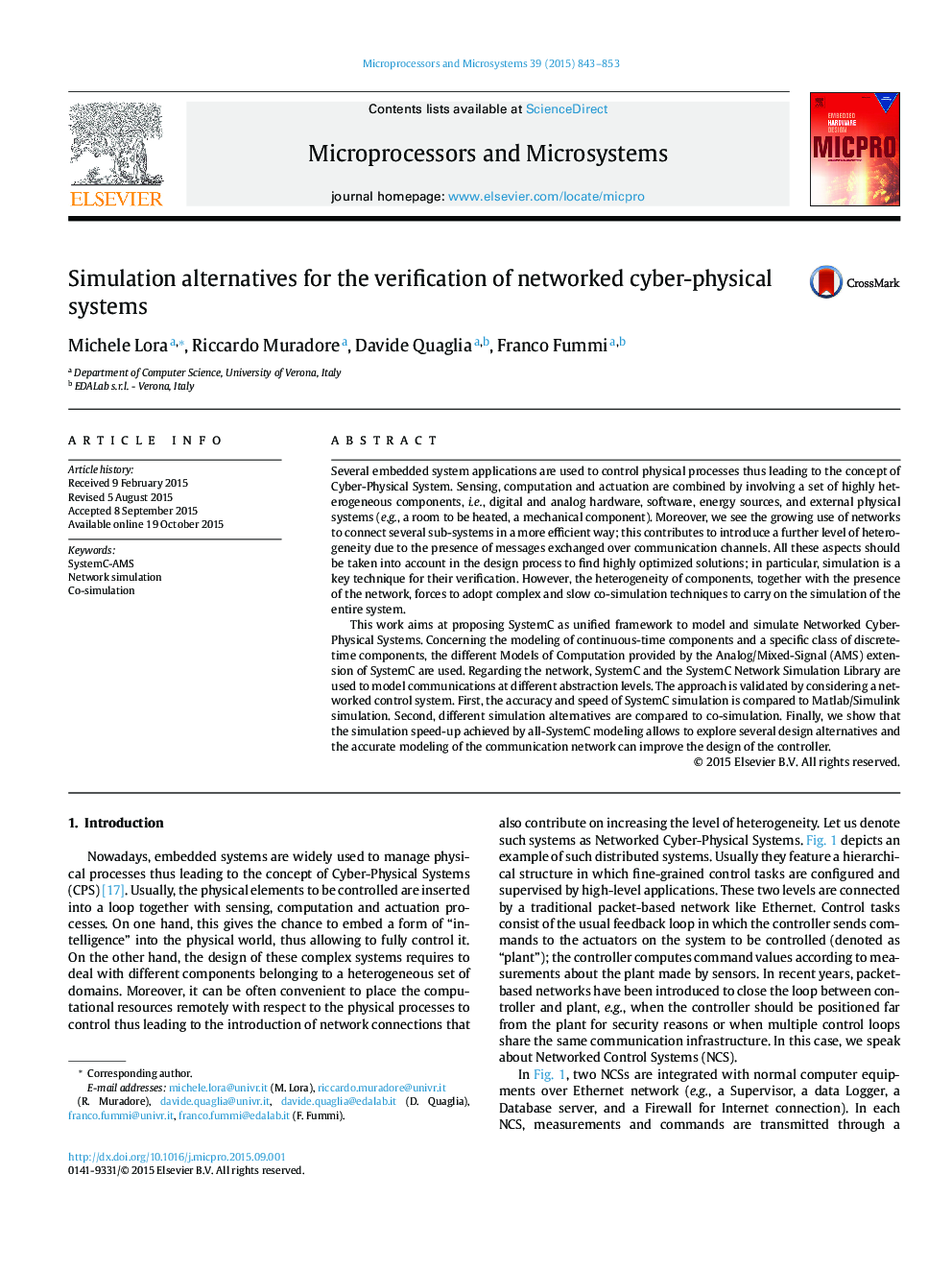| Article ID | Journal | Published Year | Pages | File Type |
|---|---|---|---|---|
| 461314 | Microprocessors and Microsystems | 2015 | 11 Pages |
•Discrete-time, continuous-time and network components are represented in SystemC.•Packet-based representation of the network is adopted.•Modeling techniques exhibit different accuracy and simulation speed.•Simulation speed also depends on the mix of the modeling techniques.
Several embedded system applications are used to control physical processes thus leading to the concept of Cyber-Physical System. Sensing, computation and actuation are combined by involving a set of highly heterogeneous components, i.e., digital and analog hardware, software, energy sources, and external physical systems (e.g., a room to be heated, a mechanical component). Moreover, we see the growing use of networks to connect several sub-systems in a more efficient way; this contributes to introduce a further level of heterogeneity due to the presence of messages exchanged over communication channels. All these aspects should be taken into account in the design process to find highly optimized solutions; in particular, simulation is a key technique for their verification. However, the heterogeneity of components, together with the presence of the network, forces to adopt complex and slow co-simulation techniques to carry on the simulation of the entire system.This work aims at proposing SystemC as unified framework to model and simulate Networked Cyber-Physical Systems. Concerning the modeling of continuous-time components and a specific class of discrete-time components, the different Models of Computation provided by the Analog/Mixed-Signal (AMS) extension of SystemC are used. Regarding the network, SystemC and the SystemC Network Simulation Library are used to model communications at different abstraction levels. The approach is validated by considering a networked control system. First, the accuracy and speed of SystemC simulation is compared to Matlab/Simulink simulation. Second, different simulation alternatives are compared to co-simulation. Finally, we show that the simulation speed-up achieved by all-SystemC modeling allows to explore several design alternatives and the accurate modeling of the communication network can improve the design of the controller.
